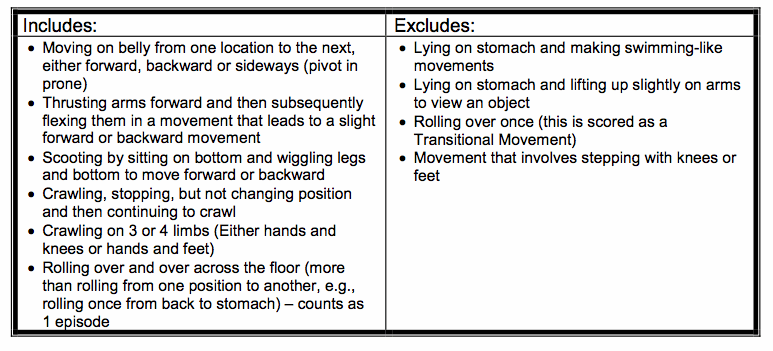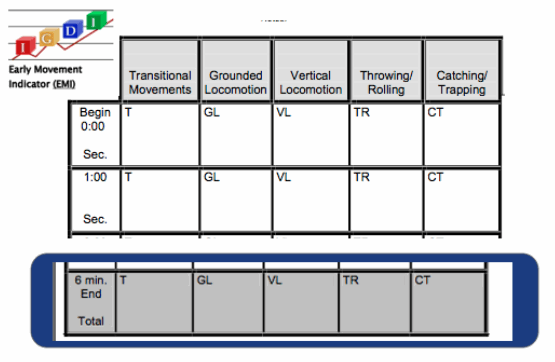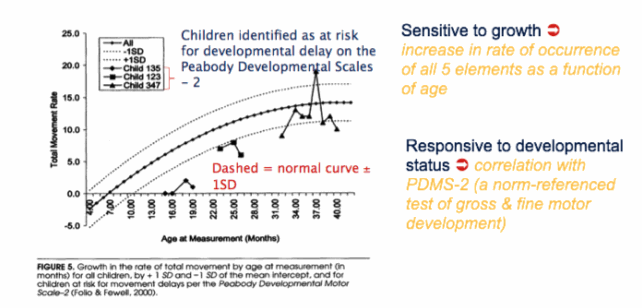PT 861 - Assessment of infant gross motor development: Down syndrome
Brief description of the EMI
- Documenting observations of movement in a way that allows changes in behaviour over time to be reliably identified and shared, as needed, with other members of an inter-professional team is a challenge. While the observation, by nature, will always be subjective, certain techniques are available that provide some 'structure' to the reporting of observations.
- One such technique is the Early Movement Indicator, or EMI. The EMI is a play-based observational measure of a child's movement occurring during a 6-minute play period with specific toys and a familiar adult. The evaluation is based on Piaget's principle that play is the work of children; at play, they are exploring and eventually mastering appropriate developmental tasks.
- The EMI evaluates the quantity of movement on 5 elements that represents an
infant's / child's increasing ability to move through an manipulate his
or her environment:
- Transitions quantify the frequency of change from one posture to another
- Locomotion quantifies that amount of grounded (e.g., crawling) and vertical (e.g., walking) mobility
- Gross motor manipulation and object control considers the frequency of manipulating objects during activities of play - throwing / rolling, and catching / trapping.
- Each of these movement elements is broken down into indicator skills; the chart below identified acceptable indicator skills for grounded locomotion.

- The frequency of observation of each of these movement behaviours for 1-minute periods over the entire 6-minutes of free play.

- This is a representative example of how EMI would be used to identify children at risk for motor delays.
